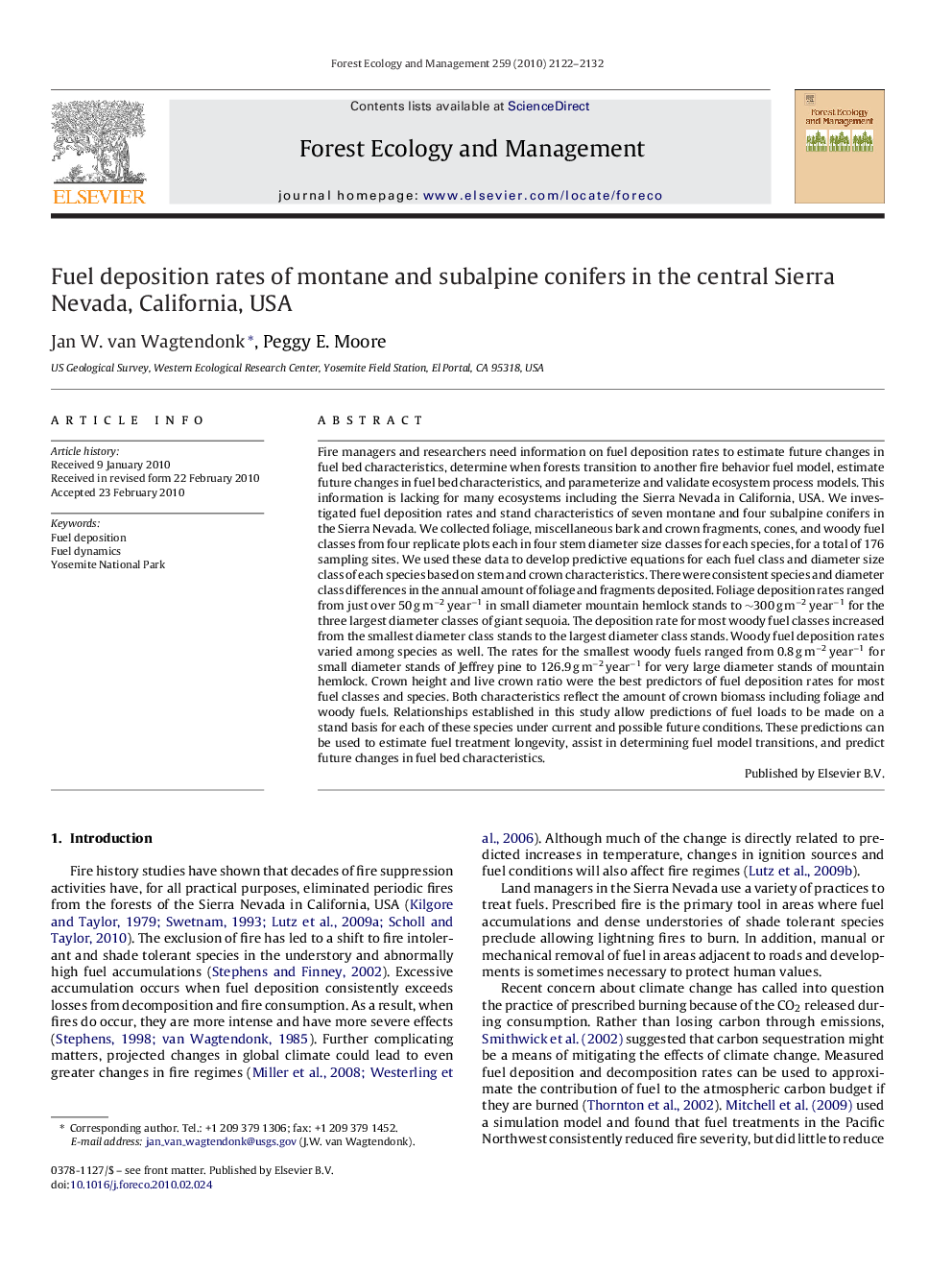| کد مقاله | کد نشریه | سال انتشار | مقاله انگلیسی | نسخه تمام متن |
|---|---|---|---|---|
| 88282 | 159293 | 2010 | 11 صفحه PDF | دانلود رایگان |

Fire managers and researchers need information on fuel deposition rates to estimate future changes in fuel bed characteristics, determine when forests transition to another fire behavior fuel model, estimate future changes in fuel bed characteristics, and parameterize and validate ecosystem process models. This information is lacking for many ecosystems including the Sierra Nevada in California, USA. We investigated fuel deposition rates and stand characteristics of seven montane and four subalpine conifers in the Sierra Nevada. We collected foliage, miscellaneous bark and crown fragments, cones, and woody fuel classes from four replicate plots each in four stem diameter size classes for each species, for a total of 176 sampling sites. We used these data to develop predictive equations for each fuel class and diameter size class of each species based on stem and crown characteristics. There were consistent species and diameter class differences in the annual amount of foliage and fragments deposited. Foliage deposition rates ranged from just over 50 g m−2 year−1 in small diameter mountain hemlock stands to ∼300 g m−2 year−1 for the three largest diameter classes of giant sequoia. The deposition rate for most woody fuel classes increased from the smallest diameter class stands to the largest diameter class stands. Woody fuel deposition rates varied among species as well. The rates for the smallest woody fuels ranged from 0.8 g m−2 year−1 for small diameter stands of Jeffrey pine to 126.9 g m−2 year−1 for very large diameter stands of mountain hemlock. Crown height and live crown ratio were the best predictors of fuel deposition rates for most fuel classes and species. Both characteristics reflect the amount of crown biomass including foliage and woody fuels. Relationships established in this study allow predictions of fuel loads to be made on a stand basis for each of these species under current and possible future conditions. These predictions can be used to estimate fuel treatment longevity, assist in determining fuel model transitions, and predict future changes in fuel bed characteristics.
Journal: Forest Ecology and Management - Volume 259, Issue 10, 30 April 2010, Pages 2122–2132